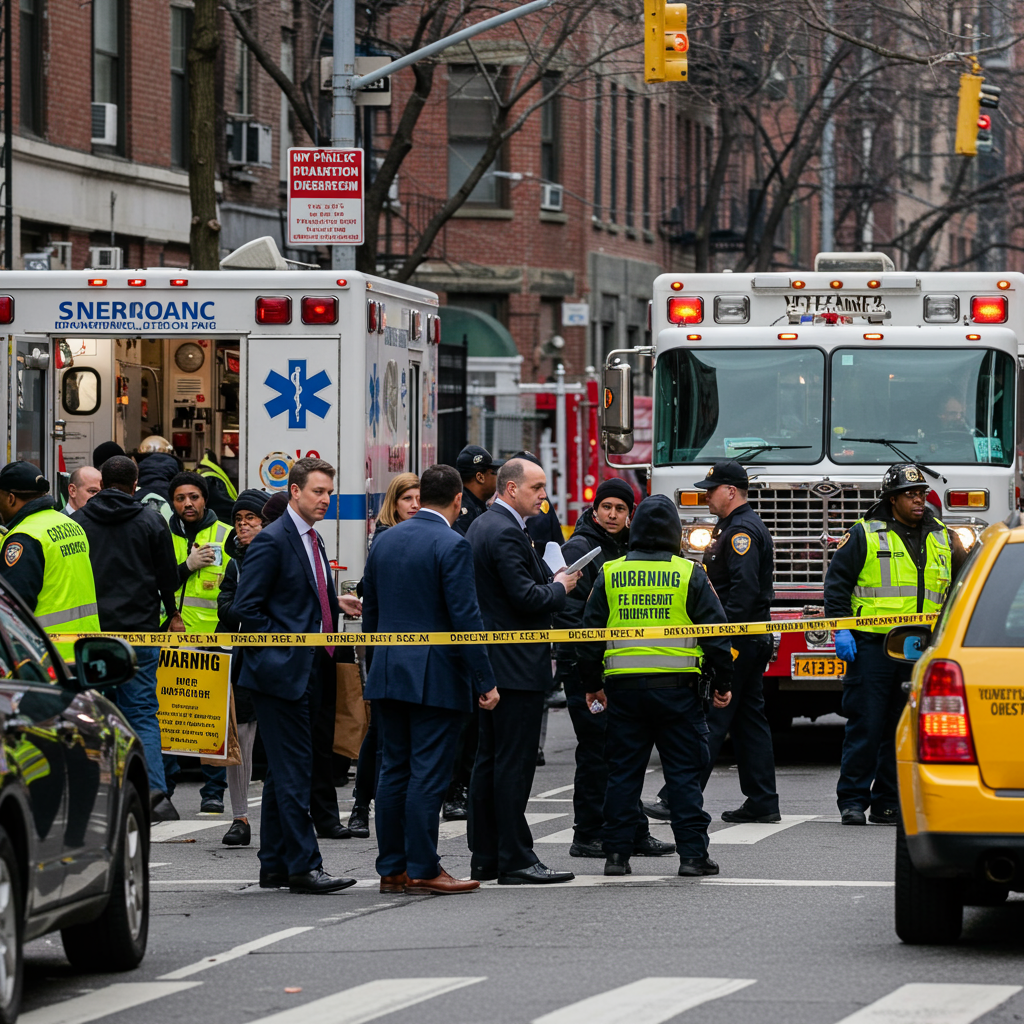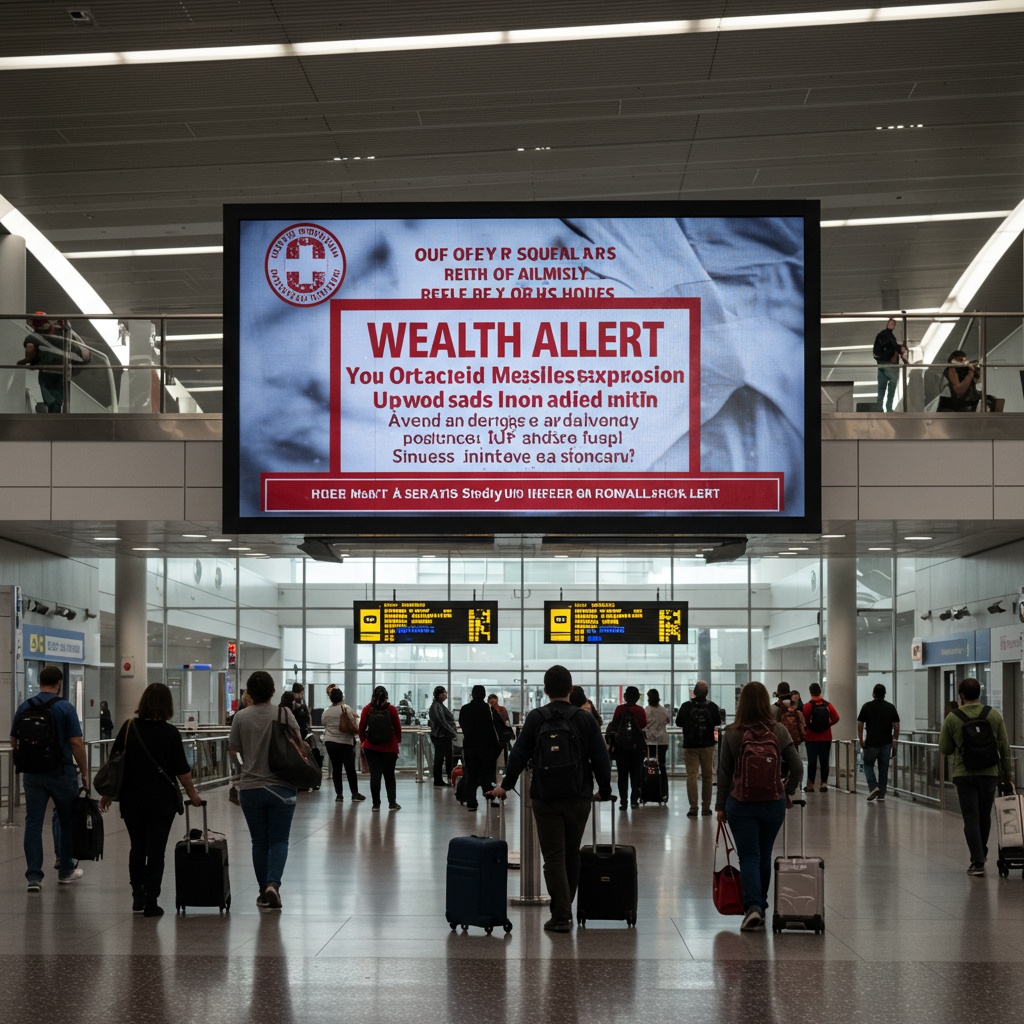A significant Legionnaires’ disease outbreak is affecting Central Harlem, New York City, prompting urgent public health warnings. As of August 6, 2025, authorities have confirmed three fatalities and 70 individuals sickened by the Legionella bacteria. This severe respiratory infection, while concerning, is not transmissible from person to person, and city health officials have quickly identified and remediated the likely sources of the contamination. Residents in the affected areas are urged to be vigilant for symptoms and seek prompt medical attention, especially those at higher risk.
Understanding the Outbreak in Harlem
The New York City Health Department is actively responding to a growing cluster of Legionnaires’ disease cases. This outbreak, first identified in late July, has escalated rapidly, necessitating immediate public advisories and investigative actions. The proactive measures taken by the city highlight its commitment to containing the spread and protecting its residents.
Latest Figures and Affected Areas
The most recent update on August 6, 2025, confirms a grim tally: three lives have been lost, and 70 individuals have contracted Legionnaires’ disease. This marks a substantial increase from the 30 cases initially reported on July 31. The outbreak’s epicenter is Central Harlem, specifically impacting residents and workers across five key ZIP codes: 10027, 10030, 10035, 10037, and 10039, along with several bordering communities. City officials have emphasized that despite the localized concentration, there is no expectation for the disease to spread to other boroughs, given its non-transmissible nature.
Tracing the Source: Cooling Towers Identified
Health officials moved swiftly to pinpoint the origin of the Legionella bacteria. Their comprehensive investigation focused on sampling cooling towers, which are vital for regulating large building temperatures and are known breeding grounds for the bacteria. This meticulous effort led to a critical discovery: 11 cooling towers within the affected zone initially tested positive for Legionella pneumophila, the specific strain responsible for Legionnaires’ disease. Crucially, all required remediation efforts for these contaminated towers have reportedly been completed, significantly mitigating the ongoing risk to public health. This rapid intervention is paramount in controlling such outbreaks.
What is Legionnaires’ Disease?
Legionnaires’ disease is a severe form of pneumonia, a serious lung infection. It’s caused by inhaling microscopic water droplets contaminated with Legionella bacteria. These bacteria thrive in warm, stagnant water environments common in human-made water systems. While the disease can be life-threatening, particularly for vulnerable populations, it is generally treatable with antibiotics if diagnosed early. Understanding its characteristics is key to prevention and rapid response.
Symptoms and How it Spreads
Symptoms of Legionnaires’ disease often mimic those of the flu, appearing typically two to fourteen days after exposure. Key indicators include cough, fever, chills, muscle aches, and difficulty breathing. Some individuals may also experience headaches, confusion, diarrhea, or nausea. It is vital to remember that Legionnaires’ disease does not spread from person to person. Instead, individuals contract the illness by breathing in water vapor containing the Legionella bacteria. Common sources where Legionella can proliferate include cooling towers, hot tubs, whirlpool spas, decorative fountains, humidifiers, and large plumbing systems with hot water tanks.
Who is Most At Risk?
While anyone can contract Legionnaires’ disease, certain groups face a significantly higher risk of severe illness or complications. Generally, healthy individuals exposed to the bacteria do not become ill. However, increased vulnerability applies to:
Individuals aged 50 years and older.
Current or former cigarette smokers.
People with chronic lung diseases, such as emphysema or COPD.
Those with weakened immune systems due to conditions like cancer, diabetes, kidney failure, liver failure, or organ transplants.
Early detection and treatment are especially crucial for these high-risk populations. Prompt medical attention can dramatically improve outcomes and reduce the likelihood of severe complications, including lung failure and death.
NYC’s History with Legionnaires’
New York City often experiences higher rates of Legionnaires’ disease compared to other cities across the United States. This trend is partly attributed to the city’s dense urban environment, numerous large buildings equipped with complex water systems, and older infrastructure. Understanding past outbreaks helps inform current public health strategies and reinforces the importance of consistent building maintenance.
Lessons from Past Outbreaks
The city has faced significant Legionnaires’ outbreaks before. The largest recorded incident occurred in the Bronx in 2015, linked to a single cooling tower. That cluster sickened over 130 people and resulted in 16 deaths. More recently, in 2022, a nursing home in Upper Manhattan with multiple cooling tower regulation violations was associated with five fatalities. These previous events underscored the critical need for stringent monitoring and swift action to mitigate public health risks. They serve as stark reminders of the potential severity of Legionella contamination when left unchecked.
City’s Regulatory Response
Following major outbreaks, New York City has implemented robust regulations designed to prevent future occurrences. These rules mandate building managers to conduct regular testing of cooling towers and submit samples to the health department. Such proactive regulatory frameworks aim to identify and address potential Legionella growth before it leads to widespread illness. The ongoing investigation and rapid remediation of the 11 identified cooling towers in Harlem demonstrate the effectiveness of these established protocols and the city’s commitment to enforcing them.
Protecting Yourself and Your Community
Public health officials are taking comprehensive steps to manage the current Legionnaires’ outbreak. However, individual awareness and timely action are equally vital for community safety. Knowing what to look for and when to seek help can make a significant difference in preventing severe outcomes.
Recognizing Symptoms and Seeking Care
It’s crucial for anyone living or working in the affected Harlem areas (ZIP codes 10027, 10030, 10035, 10037, and 10039) to be highly aware of potential symptoms. If you experience flu-like symptoms such as cough, fever, chills, muscle aches, or difficulty breathing, contact a healthcare provider immediately. This is especially important for individuals within the high-risk categories. Remember, early diagnosis and antibiotic treatment are critical for recovery. Despite the outbreak, the New York City Health Department has reassured residents that it remains safe to drink water, bathe, shower, cook, and use air conditioners in their homes, as the issue is not with the general plumbing system.
Preventive Measures for Building Owners
Beyond the immediate crisis, preventing future Legionnaires’ outbreaks requires diligent ongoing effort. Building owners and managers play a pivotal role. The CDC recommends several key preventive measures:
Regular Disinfection: Properly disinfect and maintain cooling towers, hot tubs, whirlpool spas, and large-scale humidifiers.
Water Temperature Control: Maintain water temperatures outside the Legionella growth range (77-113 degrees Fahrenheit).
Biofilm Management: Implement strategies to prevent the formation of biofilm, a slimy substance where bacteria can proliferate.
Stagnation Prevention: Ensure good water flow to prevent water stagnation in plumbing systems.
Routine Testing: Adhere to city regulations for regular testing of cooling towers and other high-risk water systems.
These measures are essential for ensuring public safety and preventing the growth and spread of Legionella bacteria in commercial and residential buildings.
Frequently Asked Questions
What are the main symptoms of Legionnaires’ disease, and how is it contracted?
Legionnaires’ disease is a severe form of pneumonia. Its symptoms typically include cough, fever, chills, muscle aches, and difficulty breathing, often mimicking the flu. Other possible signs are headache, confusion, diarrhea, or nausea. The disease is contracted by inhaling microscopic water vapor droplets contaminated with Legionella* bacteria. It is important to note that Legionnaires’ disease does not spread directly from person to person.
Which areas of New York City are currently affected by the Central Harlem Legionnaires’ outbreak?
The current Legionnaires’ disease outbreak is localized to New York City’s Central Harlem neighborhood. Specifically, the New York City Health Department has identified cases across five ZIP codes: 10027, 10030, 10035, 10037, and 10039. The outbreak also impacts some bordering communities within that vicinity. Health officials have reassured the public that the disease is not expected to spread to other boroughs.
What steps should I take if I live in an affected area and experience flu-like symptoms?
If you live or work in the identified Central Harlem ZIP codes (10027, 10030, 10035, 10037, 10039) and develop flu-like symptoms such as a cough, fever, chills, muscle aches, or difficulty breathing, you should immediately contact a healthcare provider. Early diagnosis and antibiotic treatment are crucial for recovery from Legionnaires’ disease, especially for individuals at higher risk, such as those over 50 or with underlying health conditions.
Conclusion
The Central Harlem Legionnaires’ outbreak underscores the ongoing vigilance required to protect public health in dense urban environments. While three deaths are a tragic outcome, the rapid response from the New York City Health Department in identifying and remediating contaminated cooling towers has been crucial in containing further spread. Residents, particularly those in affected ZIP codes and at higher risk, are encouraged to remain aware of symptoms and seek prompt medical care if needed. By understanding the disease, recognizing its signs, and adhering to public health guidelines, New York City can continue to navigate and overcome such challenges effectively.




